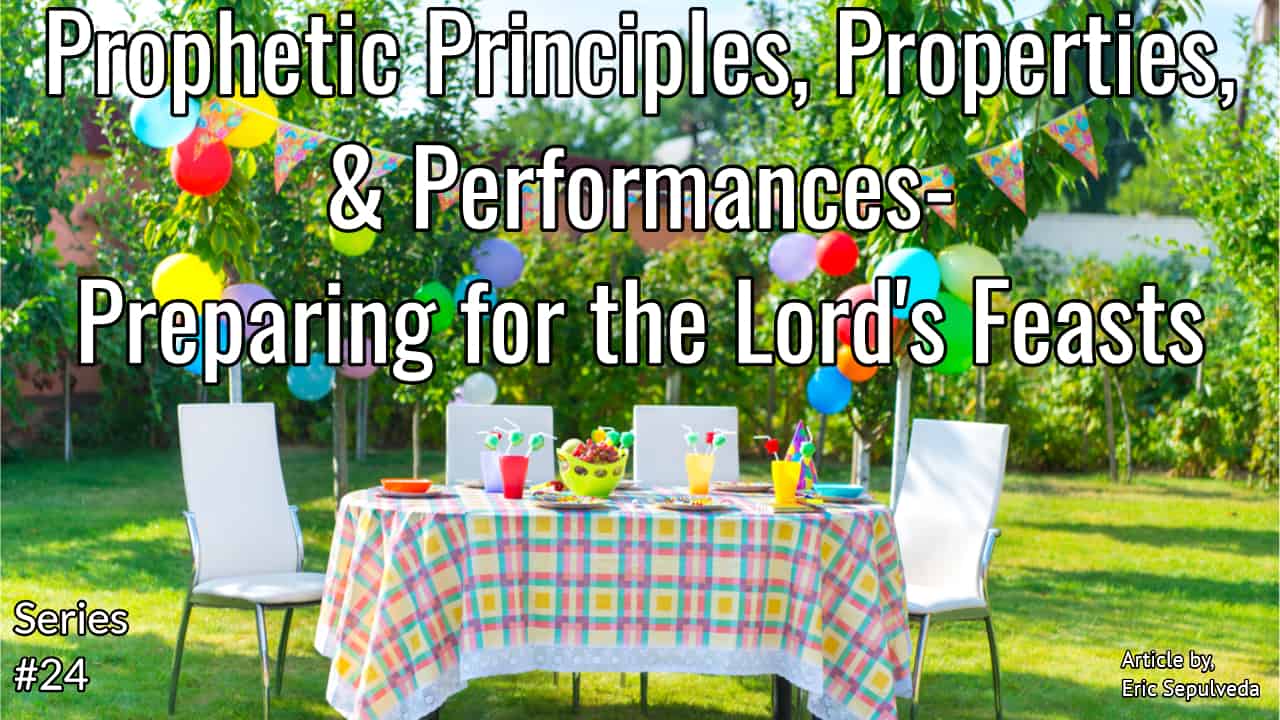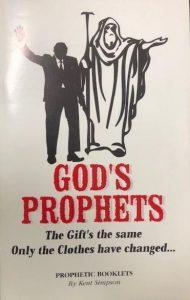
Prophetic Principles, Properties, & Performances-
Preparing for the Lord’s Feasts
As the Fall Feasts (Rosh Hashanah, Yom Kippur, & Sukkot) approach, many modern Believers might question why G3D made them an everlasting covenant and whether we are required to observe them as well. These festivals not only prophetically pointed to Christ, but their celebration also pointed to how Christ fulfilled them during His Earthly Ministry.
Our previous article explained the differences between Prophetic Principles, Properties, and Performances, all of which are displayed during the Fall Feasts.
One of the most basic Prophetic Principles is the fact G3D will not do something new without first revealing it to His Messengers: the Prophets. While G3D had some specifications for how He wanted the Festivals to be conducted, He did give His People some creative license when it came to celebrating them. While Rosh Hashanah, means Head of the Year, and was designated by the blowing of Trumpets, King Solomon chose it as the day to consecrate the Temple with a huge multi-week carnival. Modern Jews bake challah bread in a round shape specifically for Rosh Hashanah and will often eat sweet foods, such as apples and honey, as a way to toast in the New Year, hoping that the rest of the calendar dates will be just as sweet.
Because King Solomon’s consecration of the Temple became a sort of public coronation celebration, Tishrei 1, became the official time period for dating the reigns of the Kings of Judah, similar to how January 20th is the sanctioned date of the United States Presidential Inauguration. The blasting of the shofar, was not only viewed as ringing in the New Year, but also as the day to announce the coming of a new king.
Prophetic Properties are seen constantly during the Lord’s Feasts, and even some of the characteristics that Man has introduced are used as a way for the culture to understand what G3D was doing during that timeline.
Rabbi Simeon the Righteous was famous for the miracles that occurred during his tenure as the High Priest. One of the best known was the marvel that the crimson thread tied to the Temple door would turn white once the scapegoat, which was released outside Jerusalem’s wall, finally died. Though the ceremony took place on Yom Kippur, devout people would eagerly wait days and sometimes weeks to confirm that the scarlet thread had turned white, thus symbolizing that the sins of the Nation of Israel had been forgiven for the rest of the year.
Observant readers will recognize the Prophetic Properties seen in the name of the man who was waiting for the consolation of Israel, who upon seeing the Christ Child, prophesied over Jesus when He was consecrated in the Jerusalem Temple. Luke boldly describes “Simeon was righteous and devout”, paralleling the High Priest who established the tradition of tying the crimson thread to the Temple door, so that the People could wait and confirm the “consolation of Israel”.
While the details and celebration of the Festivals is important, they must not take precedence over the true meaning, which was to prophesy Christ’s Arrival.
During the Feast of Sukkot, which G3D dedicated as a week where His People would live in tents to remember their time in the Wilderness, Christ’s bothers urged Him to start heading to Jerusalem to participate in the Festival which was approaching. Jesus had been avoiding Judea for several months because the religious leaders had been threatening to kill Him. As a religious Jew, Christ of course would make the pilgrimage, but sought to keep a low profile.
During Sukkot, the principle of generosity towards strangers is manifested in the concept of Ushpizin, meaning “Guests”. Though it has transformed over millennia to have the expectation that the spirits of the “Seven Wanderers”: Abraham, Isaac, Jacob, Joseph, Moses, Aaron, and David, to each visit on a separate day of the week-long feast. Feminist minded Jews also invite Matriarchs: Sarah, Rachel, Rebecca, Leah, Miriam, Abigail, and Esther.
Self-promoting hosts would have taken great pride in saying that they had had the famous Jesus of Nazareth as their guest and drawn much attention to His Presence at the Festival. After declaring Himself the source of the Living Water and the Light of the World, during the water drawing ceremony and in front of the giant public candle on the eighth and most important night of the feast, which were both added elements to the Sukkot observance, Christ left for the Mount of Olives.
There, Christ was transfigured while standing between Moses and Elijah. Peter is seemingly not surprised by this, since there was an expectation to be visited by Ushpizin, or “guests” during Sukkot, but he failed to recognize the weight of the event and instead focused on suggesting to build tents for Moses and Elijah. Peter was focused on the Prophetic Performance of building tabernacles, rather than understanding the meaning behind them.
Though G3D laid out some specific details regarding the celebration of His Holy Feasts, Prophetic Principles show that He still used the additional aspects that His People incorporated to be able to prophesy His Son’s Arrival. Prophetic Properties such as people’s names and colors can’t be overlooked in Scripture and have been included to prove Christ is the Messiah. Finally, Prophetic Performances are extremely important in the rejoicing of His Festivals, but should not take precedence over why we are celebrating.
As the Fall Feasts approach, it is important that modern Believers are able to recognize and appreciate these important moments in Christ’s ministry. Even more significant is the fact that Christ has fulfilled these feasts as well, and by distinguishing this, His People can better identify legitimate modern prophecy.
Prepared by, Kent Simpson, Apostolic Prophet & Eric Sepulveda, PMT Administrator
For more prophetic media groups click here


